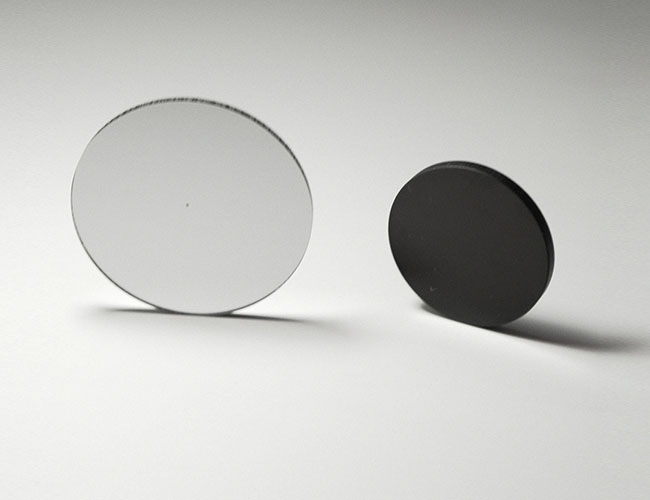ISO9001 Certified Professional Manufacturer & Supplier of Optics
+86-0431-87911611 admin@ytoptics.com
Contact us
-
 Email: admin@ytoptics.com
Email: admin@ytoptics.com
-
 Tel:86-0431-87911611
Tel:86-0431-87911611
-
 Add: 2# Automotive Innovation
Add: 2# Automotive Innovation
Jilin Province, China
Changchun Yutai Optics Co., Ltd.
Home > Products > Filters > Neutral Filters

Absorptive Neutral Density (ND) Filters
An absorptive neutral density filter (ND Filter) is an optical element that uniformly reduces the intensity of light by absorbing light of a specific wavelength. It does not significantly change the color of light (i.e., remains “neutral”) and is widely used in photography, laser systems, spectral analysis, and other applications.
Share this:
How absorptive neutral density filters work?
Absorption mechanism: through the properties of the material itself (e.g., light-absorbing substances in glass, polymers, or metal coatings) absorbs part of the incident light, converting the light energy into heat and thus reducing the intensity of the transmitted light.
Spectral neutrality: ideally, the ND filter attenuates all visible wavelengths to the same degree, avoiding the introduction of color deviation (actual products may show slight color shifts at high densities).
Optical Density (OD): indicates the degree of light attenuation, the higher the OD value, the lower the light transmission.
Formula: OD = -log10(T), where T is the transmittance (e.g. OD1=T10%).
Transmittance (T): usually expressed as a percentage (e.g. ND2=T50%).
Damage Threshold: the maximum light intensity that the ND filter can withstand is taken into account for high power laser applications (absorbed heat can lead to component damage).
What are the applications of absorptive neutral density filters?
Photography:
Long exposure shooting (e.g. waterfalls, cloud dynamic effects).
Controlled light intake at large apertures (to avoid overexposure).
Laser system:
Adjust the laser power to protect the detector or sample.
High damage threshold ND filter (e.g. fused silica substrate) is required.
Optical experiments:
Balance light intensity in the optical path to avoid sensor saturation.
What is the difference between absorptive neutral density filter and reflective neutral density filter?
Absorption: light energy is absorbed by the material, simple but may generate heat.
Reflective: excess light energy is reflected by the coating, better heat dissipation but may introduce stray light.
Absorption mechanism: through the properties of the material itself (e.g., light-absorbing substances in glass, polymers, or metal coatings) absorbs part of the incident light, converting the light energy into heat and thus reducing the intensity of the transmitted light.
Spectral neutrality: ideally, the ND filter attenuates all visible wavelengths to the same degree, avoiding the introduction of color deviation (actual products may show slight color shifts at high densities).
Optical Density (OD): indicates the degree of light attenuation, the higher the OD value, the lower the light transmission.
Formula: OD = -log10(T), where T is the transmittance (e.g. OD1=T10%).
Transmittance (T): usually expressed as a percentage (e.g. ND2=T50%).
Damage Threshold: the maximum light intensity that the ND filter can withstand is taken into account for high power laser applications (absorbed heat can lead to component damage).
What are the applications of absorptive neutral density filters?
Photography:
Long exposure shooting (e.g. waterfalls, cloud dynamic effects).
Controlled light intake at large apertures (to avoid overexposure).
Laser system:
Adjust the laser power to protect the detector or sample.
High damage threshold ND filter (e.g. fused silica substrate) is required.
Optical experiments:
Balance light intensity in the optical path to avoid sensor saturation.
What is the difference between absorptive neutral density filter and reflective neutral density filter?
Absorption: light energy is absorbed by the material, simple but may generate heat.
Reflective: excess light energy is reflected by the coating, better heat dissipation but may introduce stray light.

TALK TO US 86-0431-87911611
86-0431-87911611
Call us now!
 86-0431-87911611
86-0431-87911611Call us now!
ONLINE CHAT
 2433808388
2433808388

